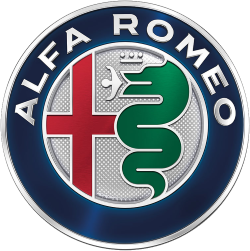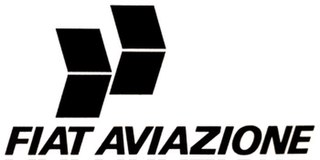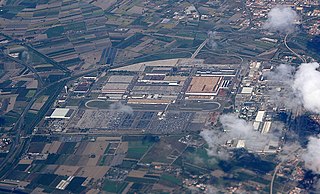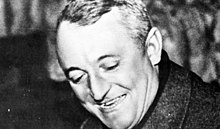
Alfa Romeo Automobiles S.p.A. is an Italian luxury carmaker known for its sports-oriented vehicles, strong auto racing heritage, and iconic design. Headquartered in Turin, Italy, it is a subsidiary of Stellantis Europe and one of 14 brands of multinational automotive company Stellantis.

Zagato is a coachbuilding company founded by Ugo Zagato in 1919. The design center of the company is located in Terrazzano, a village near Rho, Lombardy, Italy.

The Alfa Romeo Alfasud is a small family car manufactured and marketed from 1971 to 1989 by Alfa Romeo as a front-engine, four-door, five-passenger entry-level model over a single generation — with facelifts in 1977 and 1980. There was also a two-door sedan, only available in "ti" trim. Alfa Romeo subsequently introduced a three-door wagon variant, the Giardinetta (1975); two-door coupé, the Alfasud Sprint (1976); three-door hatchback (1981) and finally the five-door hatchback (1982).

The Alfa Romeo GT is a coupe automobile that was produced by the Italian automaker Alfa Romeo between 2003 and 2010. The GT was introduced in March 2003 at the Geneva Motor Show. Production started on 28 November 2003 at the Pomigliano d'Arco plant, which the GT shared the assembly plant with the 147 and 159. A total of 80,832 units were produced.

Rudolf Hruska was an Austrian automobile designer and engineer. He was most famous for his design of various Alfa Romeo cars.

Enrico Nardi was an Italian racing car driver and designer.

Ugo Zagato was an Italian automobile designer, known for establishing and running the Zagato coachbuilder, famous for its lightweight designs.

Carrozzeria Castagna is an Italian coachbuilding company based in Milan, Italy.

Carrozzeria Boneschi S.r.L. is an Italian coachbuilder, mainly of commercial vehicles. Until 1960, the company was mostly involved with automobile manufacturers such as Talbot, Rolls-Royce, Alfa Romeo, Lancia and Fiat. It was established in Milan by Giovanni Boneschi, moving to Cambiago in (1933). The factory was rebuilt after World War II (1946), after which Boneschi died. Among its designers and directors in the later years was Dr. Bruno Pezzaglia. Boneschi brand has recently been acquired by the coachbuilder Savio.

Fiat Aviazione was an Italian aircraft manufacturer, at one time part of the Fiat group, focused mainly on military aviation. After World War I, Fiat consolidated several Italian small aircraft manufacturers, like Pomilio and Ansaldo. Most famous were the Fiat biplane fighter aircraft of the 1930s, the Fiat CR.32 and the Fiat CR.42. Other notable designs were the fighters CR.20, G.50, G.55 and a bomber, the Fiat BR.20. In the 1950s, the company designed the G.91 light ground attack plane.

The Stabilimento di Mirafiori is the headquarters and industrial district of the Italian automobile manufacturer Fiat, a subsidiary of FCA Italy, which is part of Stellantis, and is the headquarters of CNH Industrial Group.

The Alfa Romeo Arese Plant was a plant area where Alfa Romeo had its head office for more than two decades prior to 1986. After Fiat Group purchased Alfa Romeo in 1986, Arese became one of the assembly plants of Fiat Group. The factory is in the Province of Milan in the Italian region of Lombardy, located about 12 kilometres (7.5 mi) northwest of Milan. The Arese plant replaced the old Alfa Romeo Portello factory and its construction was started in 1960 and took three years and until the end of the 1990s it was the biggest plant of Alfa Romeo covering a very wide area, partly in the territories of Lainate and Garbagnate Milanese. The factory became known as the Arese plant only because the main entrance is in the municipality of Arese.
Sevel S.p.A. is an Italian automotive company which produces light commercial vehicles. It was first established in 1978 by Fiat S.p.A. and PSA Group. Formerly, Alfa Romeo, Lancia and Talbot were also part of the joint venture. Sevel Sud in Italy began manufacturing in 1981. Sevel Nord in France started in 1993. Fiat sold its share of Sevel Nord to PSA in 2012 and re-entered it through the merger of FCA and PSA into Stellantis in 2021. A joint venture extension for Sevel Sud was agreed upon by both automakers in February 2019, preceding the merger of both companies into Stellantis.

The Alfa Romeo Portello Plant in Portello, Milan, Italy was the first Alfa Romeo factory, and the main factory between 1908 and the 1960s. The factory was closed in 1986 following FIAT's buyout of Alfa Romeo, but all major production had already been transferred 20 years earlier to the Alfa Romeo Arese Plant. The history of the factory is primarily involved in automobile manufacture, but over the years other products were manufactured as well.
Ermanno Cressoni was an Italian car designer who worked for both Alfa Romeo and Fiat during his career. He designed or directed the design of a number of significant cars, such as the Alfa Romeo 75 and the Fiat Coupe. He was often referred to as 'Arch'. He died in Milan, Italy in June 2005, after battling cancer for over a year.

The Alfa Romeo Pomigliano d'Arco plant, commonly called simply Stellantis Pomigliano, is an automotive assembly plant now owned by Stellantis, officially known as the Giambattista Vico Plant since 2008, in memory of the Neapolitan philosopher. The plant, originally designed and constructed in 1968 by Alfa Romeo, is located largely in the town of Pomigliano d'Arco, and partially in the town of Acerra, employing roughly 6,000.
The Alfa Romeo Avio was an Italian aviation company producing aircraft engines active since 1941. It was founded as a division of Alfa Romeo but was sold to Aeritalia in 1986 and then to Fiat in 1996. It was merged with Fiat Avio in 2003 as Avio S.p.A.
Alfa Romeo A15 / A19 / A38 / F20 are a discontinued line of utility trucks, or lorries, produced by Alfa Romeo from 1967 to 1974.
Pier Ugo Gobbato was an Italian racing driver, engineer and general manager of Ferrari and Lancia.
The history of Alfa Romeo, an Italian car manufacturer known for producing sports cars, began on June 24, 1910 with the founding of ALFA in Milan. In 1918 the company changed its name to "Alfa Romeo" following the acquisition of control of the company by Nicola Romeo.














